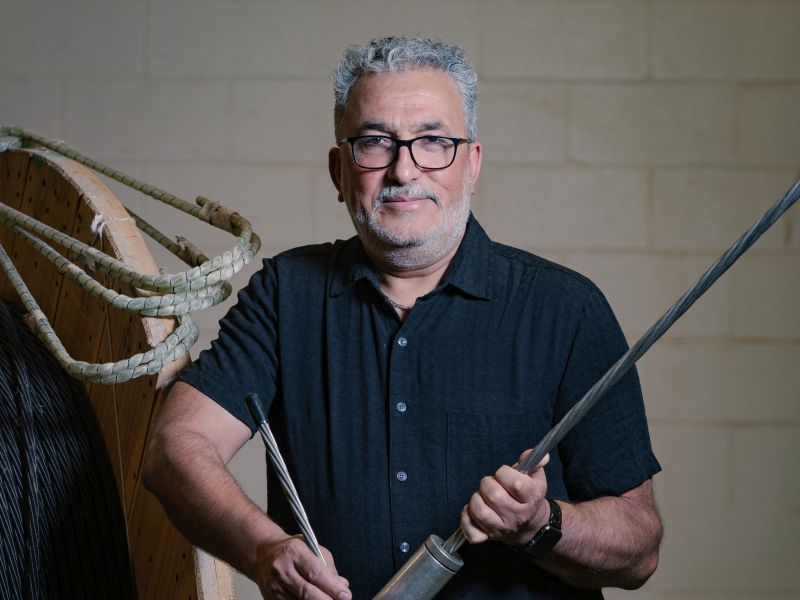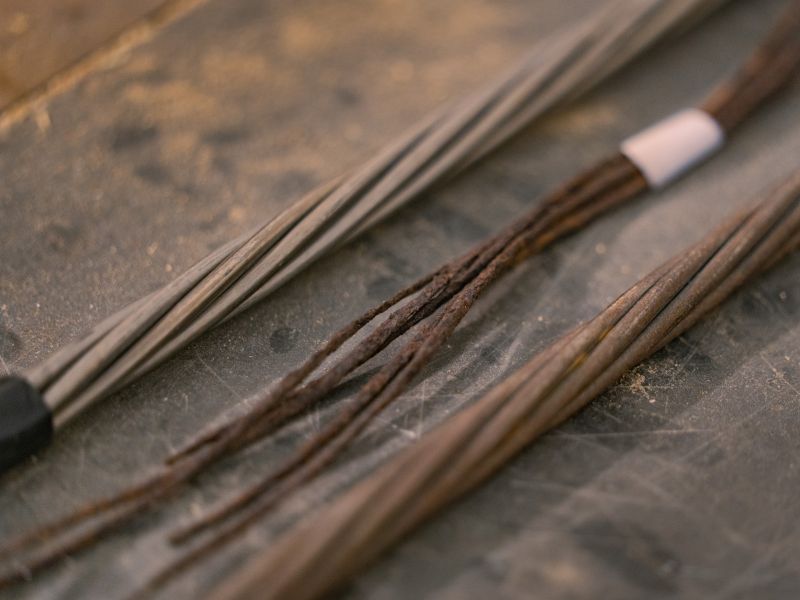A professor at the University of Houston's Cullen College of Engineering has received a $600,000 award from the National Cooperative Highway Research Program to continue his research into bridge materials that would resist corrosion.
Abdeldjelil “DJ” Belarbi, Ph.D., Hugh Roy and Lillie Cranz Cullen Distinguished Professor of Civil and Environmental Engineering, received approval for his proposal, “Stainless Steel Strands for Prestressed Concrete Bridge Elements,” in July 2020. NCHRP is part of the National Academies of Sciences, Engineering and Medicine.
Although his current research under the awarded grant is fairly new, Belarbi noted that it continues his work from previous research, which has now progressed from “science to direct implementation.” Additionally, it is projected to run through March 2023.
Assisting Belarbi on the project is postdoctoral fellow Damian Stefaniuk and Ph.D. student Khalad Elsayed, with postdoctoral fellow Lara Zerbe having assisted in the planning stages before taking an engineering position at Thorton Tomasetti.
Belarbi described how most bridges have been made – but also, how this leads to problems with maintenance efforts and associated costs.
“The majority of the structural and transportation systems that we design and build are made of steel and concrete,” he said. “Steel in prestressed concrete structures in most cases, serves as reinforcement to concrete and is embedded in concrete. With time, the steel may undergo corrosion that requires regular monitoring and maintenance and that will ultimately shorten the life of the structure. With a costly consequences of corrosion, steel is not viewed as a cost-effective option in an aggressive environment.”
Belarbi compared corrosion in civil engineering to cancer in the field of medicine. Mitigation and treatment would have a cascading effect.
“Think of corrosion in infrastructure as cancer in humans,” he said. “Eliminating cancer will be a breakthrough in science and the health system. We are taking the same approach for the infrastructure. I do research in structural systems, but I am targeting bridges and other types of structures that suffer from corrosion.”
Because of this, Belarbi said he has been motivated in recent years to study alternatives to design and build what will provide a corrosion-free civil infrastructure.
“This would prolong the life of our infrastructure, making it more durable and resilient, and reduce the cost over the life cycle of our structures,” he said. “It is similar to improving medicine, life expectancy of humans while reducing the cost of healthcare. Stainless steel strands for prestressing for bridges is another advanced material that I am investigating as a continuation of my previous work using carbon fiber-reinforced polymers strands.”
The previous work that Belarbi has done in the field has built on itself, and he said that they are now investigating practical applications and new engineering methods.
“As part of this large effort, we have codified our research and developed design specifications, guidelines and procedures to enable the bridge engineers to use this new technology, and build more durable and resilient infrastructure,” he said. “We have developed so far two design specifications for bridge engineers and we are now working on two more. By the end of the on-going research and projects, we will provide the engineering community with new design tools using innovative materials.”
Belarbi added that the bridges in the United States and worldwide are in need of new and advanced construction materials and engineering methods to fight corrosion.
“There are more than 600,000 bridges in the U.S., and close to half of those are more than 50 years old,” he said. “Close to 50,000 bridges are structurally deficient and in poor conditions. Unfortunately, close to 180 million trips are taken on these deficient bridges. As more bridges get older, we’ll see more deteriorated bridges and higher costs to keep our infrastructure healthy. One of my goals is to reverse the trend and build future bridges that last longer, at least double the current life expectancy from 60 years to at least 120 to 150 years. In addition to making our bridge last longer, this will require less monitoring and maintenance, and therefore, lower the cost overall.”

